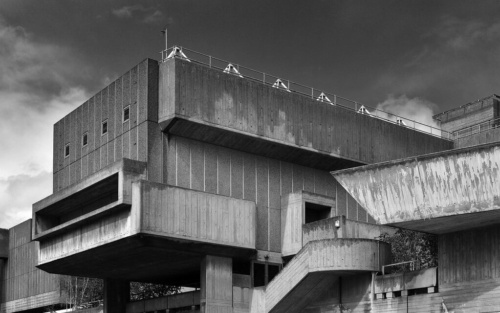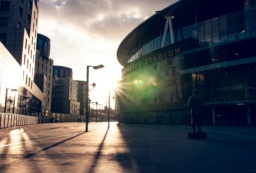It’s widely believed that South Bank’s blocky, futuristic design took shape as a construction project for the 1951 Festival of Britain which celebrated the nation’s arts, architecture and futuristic technology in the rebuilding of Britain after World War 2. However, that wasn’t the case. Newly-elected PM Winston Churchill hated many of the ideas around the festival and even had the festival site demolished. Indeed, the Brutalist architecture which stands today was inspired by Churchill’s vision for a totally new South Bank.
In the early 1950s, the desire for a new beginning after the war and Churchill’s demand for a new look meant that its construction was driven by an unstoppable avant-garde aesthetic with little respect for the past. So by the 1960s, a ‘brutally’ dystopian look emerged.
However, Brutalism wasn’t meant to be a derogatory term but comes from the French beton brut (raw concrete). But never was a term so fitting for its bulky, hard-edged aesthetic. Daily Mail readers voted the Hayward Gallery, the ugliest building in Britain and Prince Charles wasn’t too complimentary about South Bank buildings either. Comparisons with nuclear power stations were bandied about. Ultimately, Brutalism’s rejection of the past and its unusual look maKe it one of the most hated architectural forms this country has ever known.
 National Theatre, designed by Denys Lasdun
National Theatre, designed by Denys Lasdun
Having said that, opinions remain mixed. A Radio Times poll revealed the National Theatre was in the top 5 hated and loved buildings in the UK. Designed by Sir Denys Lasdun, it’s a landmark concrete cathedral of performing arts and true to the vision of the overseeing London County Council architects, who were so left-field they would go on to found the Archigram neo-futuristic movement.

Also, few can argue that the reinforced concrete blocks and sci-fi B-movie walkways give South Bank a distinct character incomparable with anywhere in the capital, making it an easily found, iconic culture spot for tourists, creatives and couples seeking a romantic riverside walk with a difference. One might also argue that its appeal would fade significantly without the polarising Brutalist architecture.

Brutalism as an aesthetic was birthed from 1950s futurism, however Brutalism’s own future on South Bank is not so clear. Only the Grade 1 listed Royal Festival Hall and Grade II listed National Theatre are protected from the bulldozers. The 2017 refurbishment of the Queen Elizabeth Hall, Purcell Room and Hayward Gallery was just a touch up job that retained the reviled-loved exterior. And the heritage calendars of the likes of the National Trust still promote tours of its Brutalist sites so don’t expect any demolishion orders just yet!
Also see South Bank’s Brutalist Architecture in Photos and Festival of Brexit





